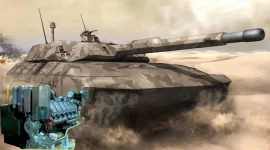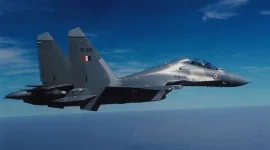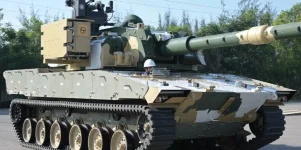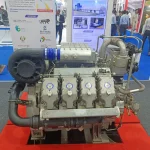- Views: 1K
- Replies: 10
The Combat Vehicles Research and Development Establishment (CVRDE), a leading laboratory under India's Defence Research and Development Organisation (DRDO), has revealed plans to develop a new 700HP engine specifically designed for the Zorawar Light Tank. This initiative comes as the Zorawar project progresses towards full-scale production, aiming to optimize the tank's performance in India's challenging terrains.
Currently, the Zorawar Light Tank prototype and the first batch of 59 units are powered by an American-made Cummins 750HP engine. However, with a larger production run of 240 more units on the horizon, CVRDE has proposed an indigenous solution with its 700HP engine.
The Proposed 700HP Engine
CVRDE's new engine boasts the following specifications:- Configuration: An 8-cylinder V90 with a cross-plane crankshaft, incorporating tungsten inserts for enhanced durability.
- Dimensions: Bore x Stroke of 114 mm x 112 mm.
- Performance: Capable of reaching up to 3600 rpm, featuring an Overhead Valve (OHV) system, a waste-gated turbocharger, and a charge cooler.
- Fuel System: Common Rail Direct Injection (CRDI) for efficient fuel delivery.
- Lubrication: Utilizes a dry-sump lubrication system.
- Operational Characteristics: Achieves a mean piston speed of approximately 13.4 m/s and a Brake Mean Effective Pressure (BMEP) of 23 bar.
The alternative considered was downgrading a 1000HP engine to fit the Zorawar. However, this would require significant modifications to the tank's internal structure due to the larger size of the engine, increasing complexity and potentially compromising other design aspects.
Importantly, the new engine's design is optimized for high-altitude operations, a crucial factor given the Zorawar's intended deployment in challenging terrains like Ladakh, where traditional tanks face mobility issues due to the thin air and rugged landscape.
By developing an indigenous engine for the Zorawar Light Tank, CVRDE is not only contributing to India's self-reliance in defence technology but also ensuring that the tank is optimally equipped to meet the specific operational challenges it will face in its intended areas of deployment.




